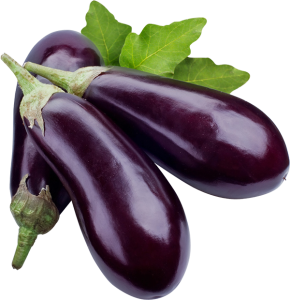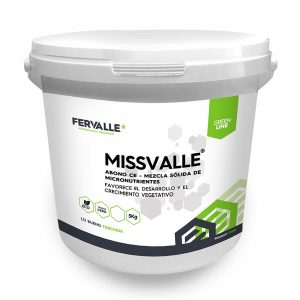CULTIVATION STRATEGY FOR

Aubergine cultivation.
Aubergines are a vegetable belonging to the Solanaceae family, like peppers, tomatoes, potatoes, etc., rich in fibre, folic acid, potassium and magnesium.
It is a vegetable that needs a large amount of water and requires at least 8-10 hours of sun per day. There are many varieties with different colours, violet being the most widely consumed.
-

CUVALLE®
Defense Inducer -

EXCALIBUR®
Revolutionary Biostimulant -

MISSVALLE®
Powerful Micronutrient Mix -

KELMAX®
Iron chelate + Micronutrients
» Planting aubergine
·When are aubergines planted ?
The cultivation of aubergines starts around March.
·How are aubergines planted?
Aubergines can be grown from seeds or seedlings.
- From seeds:
- Seeds require a minimum of 21oC to germinate.
- Optimum humidity levels for germination are very important.
- Seeds germinate after 8-17 days, depending on soil and climatic conditions.
- Seeds can be sown in seedbeds or directly in the field if conditions permit.
- From seedlings:
- They are transplanted when they have 3-4 true leaves, i.e. after about 4-6 weeks.
- Soil temperature must be above 20oC
- The best time for transplanting is the second half of spring.
Edaphoclimatic requirements
·Soil
Aubergines prefer sandy loam soils with aeration and good drainage, deep, rich in organic matter and not waterlogged. As its roots are deep, it has a certain tolerance to drought. Optimum pH levels range from 6-7.
·Climate
Aubergines are grown in warm and dry climates. In fact, it is considered one of the most heat-demanding crops.
The optimum relative humidity is between 50-65% and as far as light is concerned, it is a very demanding plant that requires 10-12 hours of sun per day.
Care requirements for aubergines
·Preparation of the soil for aubergine cultivation
The basic soil preparation for aubergine cultivation consists of:
- Ploughing the soil to improve aeration and drainage
- Applying soil conditioning fertilisers
- Installing irrigation systems
- Disinfecting floors that need it
- Covering the ground with polyethylene to concentrate the heat
In addition, it is really interesting to keep crop rotation in mind for this type of plant.
·Watering aubergines
Aubergines require abundant and regular watering. Furthermore, drip irrigation is the most commonly used irrigation system in their cultivation.
However, it is interesting to note a number of particularities:
- Initially, to ensure that the roots take root, start with abundant watering at the time of planting. When the soil begins to dry out, water again (usually after 8-12 days).
- Subsequent waterings are spaced so that the soil never dries out completely until the first fruits set.
- After fruit set, watering is intensified until the aubergines are fully grown.
·Padding
Aubergine crops require padding due to the high summer temperatures. This prevents evaporation and retains the moisture content in the plant.
·Ridging
The technique of ridging is normally done after the second watering to encourage new root growth. It consists of mounding the soil around the plant to make a mound to improve its growth.
·Trellising
Trellising in aubergines is carried out when the fruits start to increase in size, to prevent the branches from breaking or touching the ground. Rods or nets are generally used.
·Leaf removal and training pruning
Dead or dry leaves and branches must be removed. The more aeration the plant has, the better it will grow and pest and disease problems will be avoided. In addition, crop management is facilitated and the quality of the fruit is improved.
·Flower and fruit thinning
Normally only one of the three/four flowers that form in the flower cluster will be the one that will produce the fruit. The remainder should therefore be removed.
As for the fruit, it is recommended to remove malformed or damaged fruit.
» Nutrients needed for aubergine cultivation
Aubergines are nutrient demanding, needing mainly nitrogen, potassium and phosphorus.
- Nitrogen: main nutrient that supports growth and vigour
- Potassium: essential macronutrient for aubergine that improves crop quality
- Phosphorus:acts on the amount of flowers the plant produces and, as a consequence, on the amount of fruits.
In addition, they also require micronutrients such as calcium, magnesium, boron, zinc, iron, manganese and copper.
Fertiliser for aubergines
- What fertilisers does aubergine need for its cultivation?
As we have already seen in the previous section, the main components that the fertiliser for aubergines must contain are nitrogen, potassium, phosphorus, calcium, magnesium, boron, zinc, iron, manganese and copper.
For the organic cultivation of auberginesas organic fertilisers, such as manure, compost or earthworm hummus, as well as those formulated with algae, minerals or other natural elements will be applied.
Some of the fertilisers recommended for the cultivation of aubergines by Fervalle are Missvalle, Kelmax, Cuvalle or Excalibur.
Missvalle is a mix of essential microelements (magnesium, manganese, molybdenum and zinc). Its benefits include:
- It supports nitrogen uptake and chlorophyll synthesis
- Synthesis of phytohormones
- It provides necessary nutrients to the plant
- It promotes sprouting
- It improves flowering, fruit set and fruit development
Cuvalle is an organic copper formulation. Some of its functions include:
- It stimulates growth
- It activates self-defence
- It corrects copper deficiencies.
Kelmax is a liquid formulation of micronutrients with chelated iron. Its advantages over the plant are:
– It provides a large amount of essential nutrients for proper growth and development of the plant.
– It is a source of iron, which is transported via phloem to apical areas.
– It activates the synthesis of a multitude of proteins involved in photosynthesis
Excalibur is a highly concentrated solution of American Leonardite extracted in an acid medium and highly enriched with organic acids. It has benefits such as:
– High cation exchange capacity of the soil
– High stimulation power in the aerial part due to its high direct energy supply and its influence on the enzymatic and hormonal metabolism of the plant.
» Harvesting aubergines
Generally, aubergines are fully mature 60-80 days after transplanting. They are harvested by hand around July, when the aubergine takes on a satin sheen and its top is a little soft, before the seeds start to darken and enlarge.




